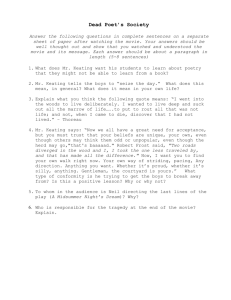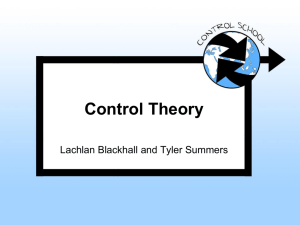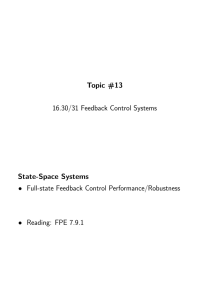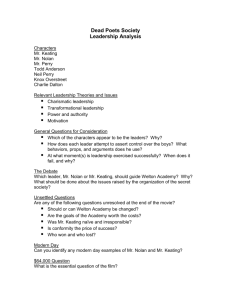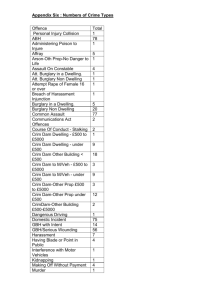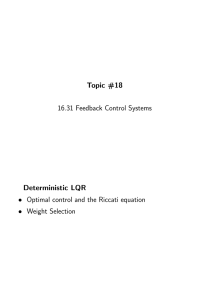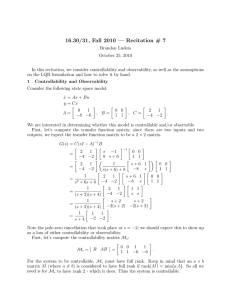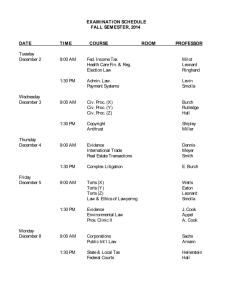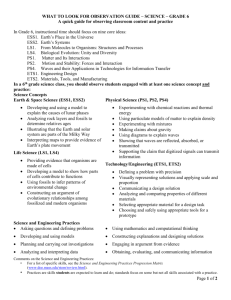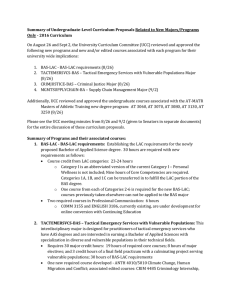criminal law supervision 1
advertisement
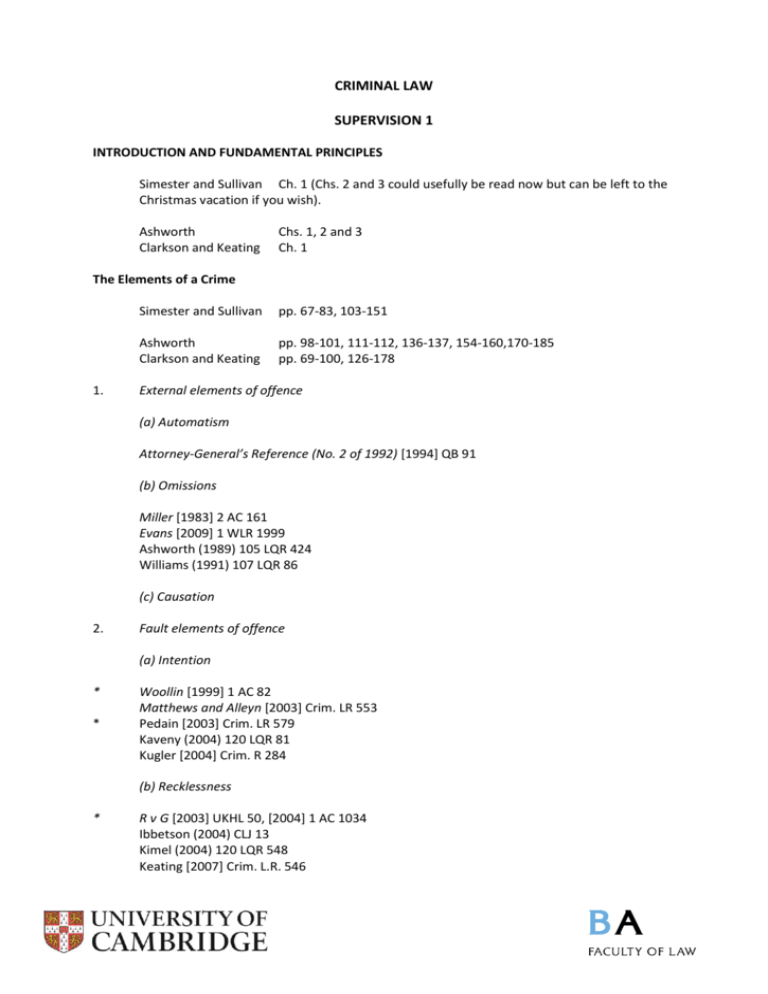
CRIMINAL LAW SUPERVISION 1 INTRODUCTION AND FUNDAMENTAL PRINCIPLES Simester and Sullivan Ch. 1 (Chs. 2 and 3 could usefully be read now but can be left to the Christmas vacation if you wish). Ashworth Clarkson and Keating Chs. 1, 2 and 3 Ch. 1 The Elements of a Crime 1. Simester and Sullivan pp. 67-83, 103-151 Ashworth Clarkson and Keating pp. 98-101, 111-112, 136-137, 154-160,170-185 pp. 69-100, 126-178 External elements of offence (a) Automatism Attorney-General’s Reference (No. 2 of 1992) [1994] QB 91 (b) Omissions Miller [1983] 2 AC 161 Evans [2009] 1 WLR 1999 Ashworth (1989) 105 LQR 424 Williams (1991) 107 LQR 86 (c) Causation 2. Fault elements of offence (a) Intention * * Woollin [1999] 1 AC 82 Matthews and Alleyn [2003] Crim. LR 553 Pedain [2003] Crim. LR 579 Kaveny (2004) 120 LQR 81 Kugler [2004] Crim. R 284 (b) Recklessness * R v G [2003] UKHL 50, [2004] 1 AC 1034 Ibbetson (2004) CLJ 13 Kimel (2004) 120 LQR 548 Keating [2007] Crim. L.R. 546 Questions for Discussion 1. Consider the meaning and significance of the following terms: (i) (ii) (iii) (iv) 2. autonomy; welfare; harm; culpability. Is it possible to cause harm by an omission to act? 3. V’s mother, stepfather and their friend D are walking by the canal when they hear cries for help. V, aged 5, who has been out playing, is drowning in about three feet of water. “Let the little bastard drown,” says D and they all walk on. V drowns. Have any of them caused V’s death? Should any of them be guilty of a criminal offence? 4. Would you say that D intended V’s death in the following cases? (a) D wished to collect the insurance money on V’s life, so he killed her. He maintained that he did not want her to die but needed the money. (b) D wished to collect the insurance money on an aeroplane. He plants a bomb on it, timed to explode when the plane is in mid-air. D knows that V, the pilot, will almost certainly be killed but hopes that she will escape. V died in the explosion. (c) D wished to collect the insurance money on a house he owned. He set fire to it at night, knowing that V was asleep inside. V was killed. 5. D picks up an airgun and, without giving a thought to whether or not it is loaded, points it at V and pulls the trigger. The gun is loaded and the pellet breaks V’s spectacles and destroys his eye. Is D guilty of malicious wounding? What about recklessly causing damage to property? 6. As in question 5, but D, on being told not to point the gun at V said “It’s quite safe - I’ve used all my pellets”? 7. As in question 5, but D has a mental age of 7 and expert evidence is adduced to prove that he is incapable of considering the risk. 8. Is objective recklessness ever an appropriate test of culpability? Please write a case-note to be handed in at the next supervision. A case-note should be about 1,000 words in length and should briefly summarise the facts, identify the ratio of the case, put the decision in context and analyse the result. Please write a note on: Woollin [1999] 1 AC 82
